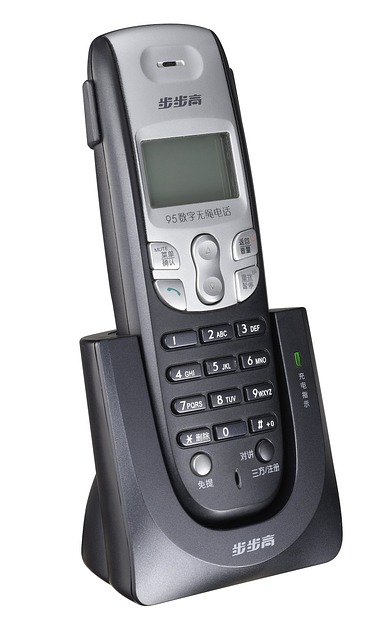Repair and Maintenance Guide for Trouble-Free GE Dishwashers
When troubleshooting common issues with a GE dishwasher, it's important to systematically addre…….

When troubleshooting common issues with a GE dishwasher, it's important to systematically address problems such as improper draining, leaks, failure to fill, or lack of heat. Solutions include cleaning or replacing the filter, inspecting and fixing kinks in the drain hose, checking and replacing worn gaskets and seals, verifying the water inlet valve's functionality, and examining plumbing supply lines. If the dishwasher isn't heating water, check the heating element and thermostat. Always ensure safety by shutting off power and unplugging before repairs. Regular door seal replacement and routine cleaning prevent leaks and maintain efficiency. For persistent issues like error codes or significant leaks beyond DIY repair scope, professional assistance is necessary to avoid further damage and safety risks. Maintenance practices such as regular filter clearing, exterior cleaning, and vinegar cleans to remove build-up are essential for the dishwasher's long-term performance and cleanliness.
When confronted with a GE dishwasher on the fritz, homeowners often face a daunting chore. This article demystifies the process of maintaining your GE dishwasher’s impeccable performance. We’ll navigate through troubleshooting common issues, guiding you step by step to diagnose and rectify leaks, replace the door seal for an airtight wash, and share invaluable tips for upkeep. Armed with this knowledge, you’ll ensure your dishwasher operates at its zenith, or if need be, recognize when it’s time to call in a professional. Let’s embark on a journey to a hassle-free clean-up and extend the lifespan of your trusty GE appliance.
- Troubleshooting Common GE Dishwasher Issues
- Step-by-Step Guide to Diagnosing and Fixing Leaks
- How to Replace the GE Dishwasher Door Seal for a Sealed Performance
- Tips for Cleaning and Maintaining Your GE Dishwasher for Optimal Functionality
- When to Call a Professional for GE Dishwasher Repairs
Troubleshooting Common GE Dishwasher Issues

When encountering common GE dishwasher issues, a systematic approach to troubleshooting can save time and prevent further complications. If your GE dishwasher isn’t draining properly, first check the filter for any blockages and clear it as necessary. Ensure that the drain hose is not kinked and that it is properly connected to both the dishwasher and the waste system. Water leakage from the door or pump can be addressed by inspecting the gaskets and seals for wear, replacing them if damaged. Additionally, verify that the water inlet valve is functioning correctly and that there are no issues with the plumbing supply lines. If the dishwasher is not filling with water, check the air gap if present, as it may be blocked. Also, review the owner’s manual to confirm the correct operation of the water inlet valve and the function of any electrical components, such as switches and fuses, which could be malfunctioning or burned out. Lastly, if your dishwasher is not heating water, investigate the status of the heating element and thermostat, and consider whether a replacement might be necessary for proper functioning. Always remember to power off the dishwasher and unplug it before attempting any repairs to avoid electric shock.
Step-by-Step Guide to Diagnosing and Fixing Leaks

When encountering a leak in your GE dishwasher, prompt diagnosis and repair are key to maintaining efficient operation and preventing water damage. Begin by identifying the source of the leak; common culprits include the door gasket, pump assembly, or wash arm. Ensure the dishwasher is unplugged and, if necessary, turn off the water supply valve to prevent additional water from entering.
To diagnose a leak from the door gasket, inspect it for any signs of wear, damage, or deterioration. Clean away any debris or buildup that may have caused the seal to fail. If the leak originates from the pump assembly, check the hoses and connections for tightness; reattach any loose fittings securely. For leaks at the wash arms, examine each one, replacing or repairing them as needed. After addressing these components, run a test cycle to verify that the leak has been resolved. If the issue persists, consider consulting a professional or referencing the dishwasher’s manual for additional troubleshooting steps.
How to Replace the GE Dishwasher Door Seal for a Sealed Performance

When your GE dishwasher’s door seal begins to show signs of wear, it can lead to water leaks and decreased efficiency during operation. To maintain a high-performing dishwasher, it is necessary to replace the door seal periodically. This task is straightforward with the right tools and instructions. Start by unplugging your dishwasher or turning off its circuit breaker to ensure safety. Then, remove the lower rack completely. Locate the retaining clips on the outside edge of the door frame where the old door seal meets the dishwasher’s body. Carefully release these clips to detach the old seal. Once detached, gently slide out the old door seal while pulling it forward.
To install the new door seal, start by aligning its inner lip with the inside edge of the dishwasher door frame. Gently insert the seal into position, making sure it is snug and properly aligned along the entire length. Next, reattach the retaining clips to secure the new seal in place. Ensure that the seal fits flush against the door without any gaps where water could seep through. After securing the seal, reinsert the lower rack and run a test cycle to confirm that the new seal is functioning correctly and has eliminated any leaks or water intrusion issues. Properly maintaining your GE dishwasher’s door seal ensures a sealed performance each time you run a cycle, leading to a hassle-free clean-up experience.
Tips for Cleaning and Maintaining Your GE Dishwasher for Optimal Functionality

To ensure your GE dishwasher operates at its best, consistent cleaning and maintenance are key. Begin by wiping down the exterior with a damp cloth and a mild detergent to remove any fingerprints or smudges. This not only keeps your appliance looking pristine but also prevents grime from affecting the finish. Regularly inspect the dishwasher’s rubber gasket for food particles, soap residue, or mineral build-up, which can hinder its seal and lead to leaking. Gently clean this area with a soft-bristled brush or a cloth dipped in warm, soapy water.
For the internal components, run the dishwasher’s hot wash cycle monthly with a cup of white vinegar placed on the top rack to remove any lime scale or soap scum build-up. This will help maintain optimal water flow and spray arm function. Additionally, avoid overloading the dishwasher, as this can restrict water circulation and affect cleaning efficiency. Clear filters regularly, especially the bottom one where food particles often accumulate, to ensure proper drainage and rinsing. By following these tips, you’ll extend your GE dishwasher’s lifespan and maintain its performance for hassle-free clean-up.
When to Call a Professional for GE Dishwasher Repairs

When encountering issues with your GE dishwasher, discerning when to attempt a repair yourself and when to call in a professional is key to maintaining efficient operation and preventing further damage. Common signs that indicate the need for professional intervention include persistent error codes that don’t clear after a reset, unusual noises from the machine during its cycle, water leaks that are not confined to minor seepage around the door, and a dishwasher that fails to start or complete a cycle properly. While some troubleshooting steps can be performed with basic DIY knowledge, such as checking for clogs in the filter or ensuring the machine is properly connected and powered, more complex issues like electrical problems, water supply complications, or major structural failures are best left to experienced professionals. They possess specialized tools and expertise necessary to safely and effectively address these concerns, ensuring your dishwasher operates correctly and efficiently.
In the event that a repair seems beyond your comfort level or if the problem persists after initial attempts to fix it, reaching out to a professional is advisable. Attempting to fix intricate issues like electrical faults or gas-related problems without proper training can lead to safety hazards, such as electric shocks or gas leaks. A certified technician can diagnose the issue accurately and either repair or replace the necessary parts. Additionally, professionals can offer maintenance tips and advice on how to extend the life of your GE dishwasher, providing peace of mind and ensuring that your kitchen clean-up remains hassle-free.
maintaining your GE dishwasher in peak condition can save you time, water, and energy, ensuring your dishes come out spotless with every cycle. By familiarizing yourself with common issues, following the provided step-by-step guides, and practicing regular maintenance, you can troubleshoot minor problems confidently and effectively. However, if a repair seems beyond your comfort level or if your dishwasher’s performance significantly deteriorates, professional assistance is always the safe choice to prevent further damage. Remember, a well-maintained GE dishwasher not only streamlines your post-meal cleanup but also contributes to a more efficient and orderly kitchen environment.







